
8 Inviting Cemeteries to Visit in the West
Graveyards might be spooky to some, but they can also be havens of natural beauty and fascinating history.
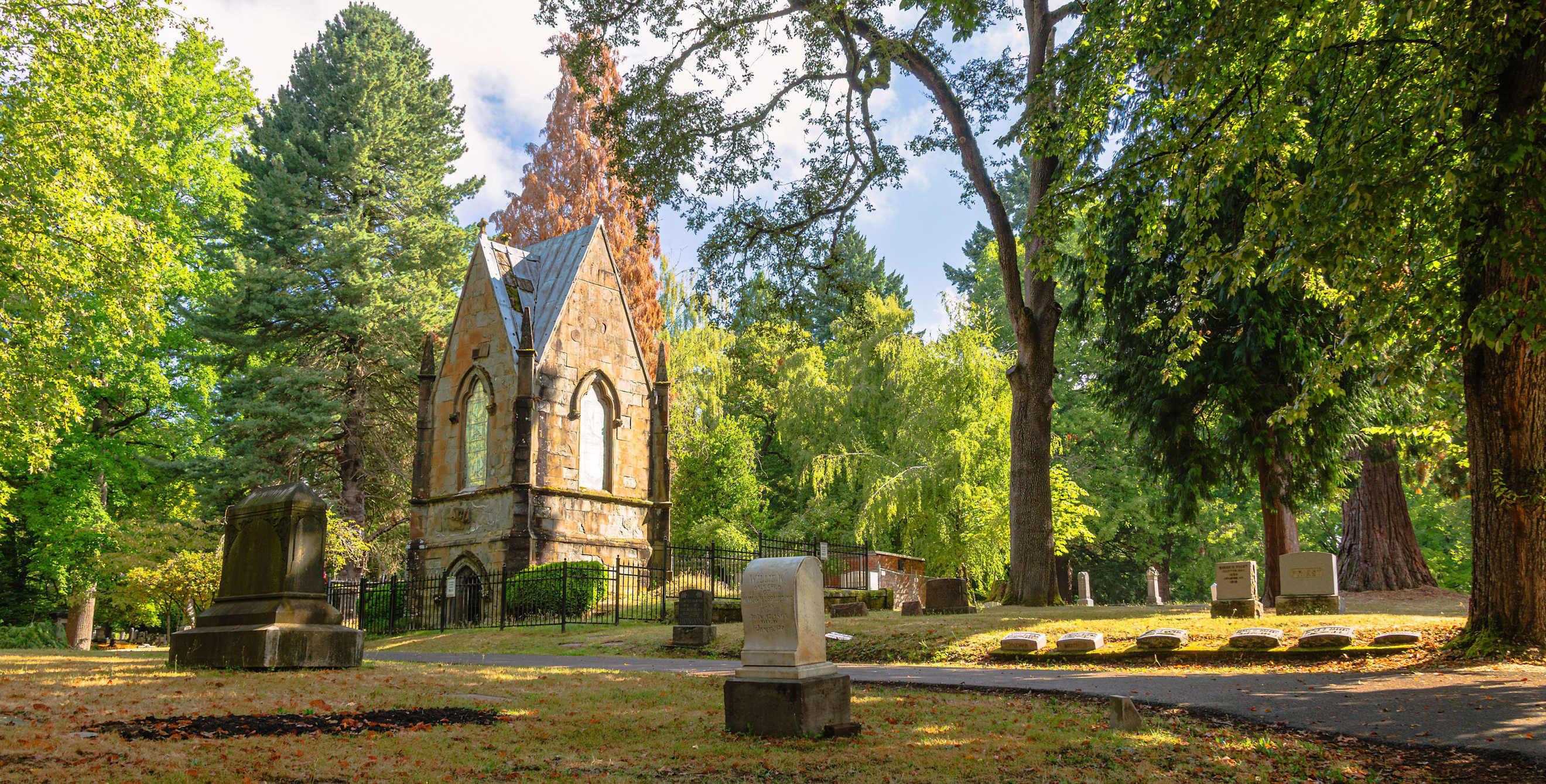
In many cultures, the fall—especially Dia de los Muertos and All Souls’ Day at the beginning of November—is a time to remember deceased friends and family. Those remembrances may include a visit to the places where those loved ones are buried.
But for many people, cemetery visits aren’t limited to a few days in the fall. Rather, such places can be compelling destinations year-round, whether or not you know someone buried there.
The reasons for “tombstone tourism” are many. Cemeteries are often beautifully landscaped parks. Some are home to dramatic architecture and art. Others preserve history, reflecting the lifestyles and values of those who came before us. Many poetically express the ways people view nature and death. Most provide peaceful places to relax and reflect.
We’ve collected some notable examples from around the West, each worthy of a detour when you’re in the area, each with compelling reasons to visit.
Note: When visiting a cemetery, be respectful and mindful of the etiquette. Treat them as you would any place of worship. Among other things, that means you shouldn’t:
- touch the gravesites
- take any objects
- snap selfies
- speak loudly
- disturb mourners
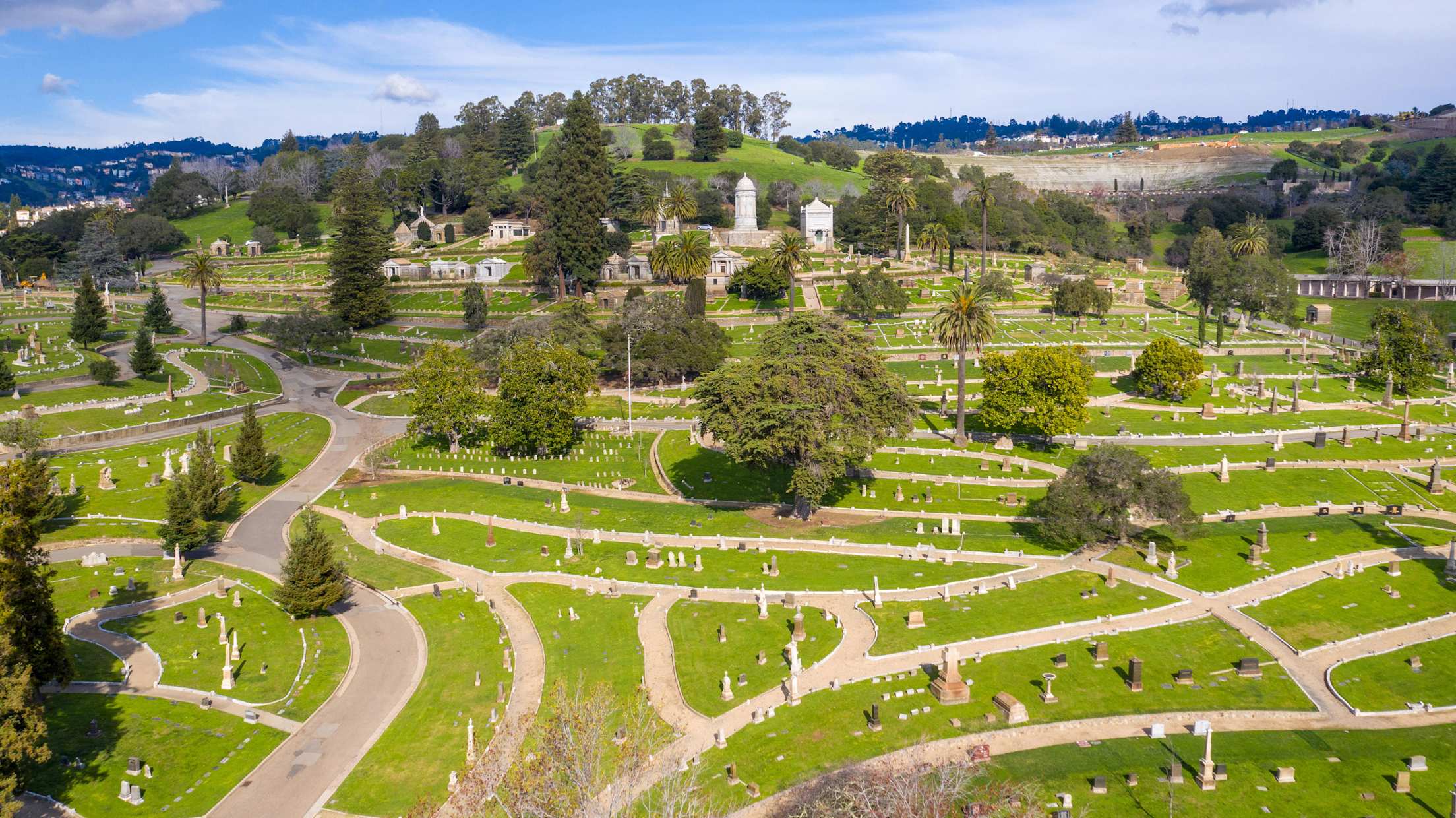
Mountain View Cemetery, Oakland, California
Just 15 minutes from the bustle of downtown Oakland, you’ll find a serene refuge designed by Frederick Law Olmsted—the same landscape architect who designed New York City’s Central Park. The 223-acre Mountain View Cemetery, built during the Civil War, is subtle and elegant.
The curves of the serpentine pathways echo the undulating hills. Many of the headstones are placed irregularly and far apart, like boulders in a wilderness. Dark green conifers frame panoramic San Francisco Bay Area views: Olmsted thought mourners could take comfort in the “heaven-pointing spires” of the cypresses, while their canopies extended “sheltering care” over the deceased. By emphasizing nature in his design, Olmsted hoped visitors would view death as a natural, equalizing experience and contemplate “our common grief, our common hopes.”
Lone Fir Cemetery, Portland
Like vignettes from Richard Powers’ Pulitzer Prize-winning novel The Overstory, the 700 trees in this cemetery intertwine with the stories of local families. Most of the trees were planted as memorials. In autumn, their colorful canopies and crunchy fallen leaves add atmosphere to this classic graveyard.
Gaze up at the towering Douglas fir that inspired Aurelia Barrell, wife of the landlord, to choose the name Lone Fir in 1866. Touch the trunks of the four sequoias that surround the grave of Capt. Daniel Wright, who fell in love with the conifers as a California gold rusher. At the Clayson family plot, salute Esther Clayson Pohl Lovejoy, the first woman in the country to direct a city department of health (the Portland Board of Health); while you’re there, thank the Claysons for all the red-berried hollies they planted around the cemetery. In the rose garden, see cultivars brought by pioneer women who stuck flower cuttings in potatoes to keep them moist along the Oregon Trail. On Halloween, hear quirky tales of the cemetery’s late residents on a guided tour.
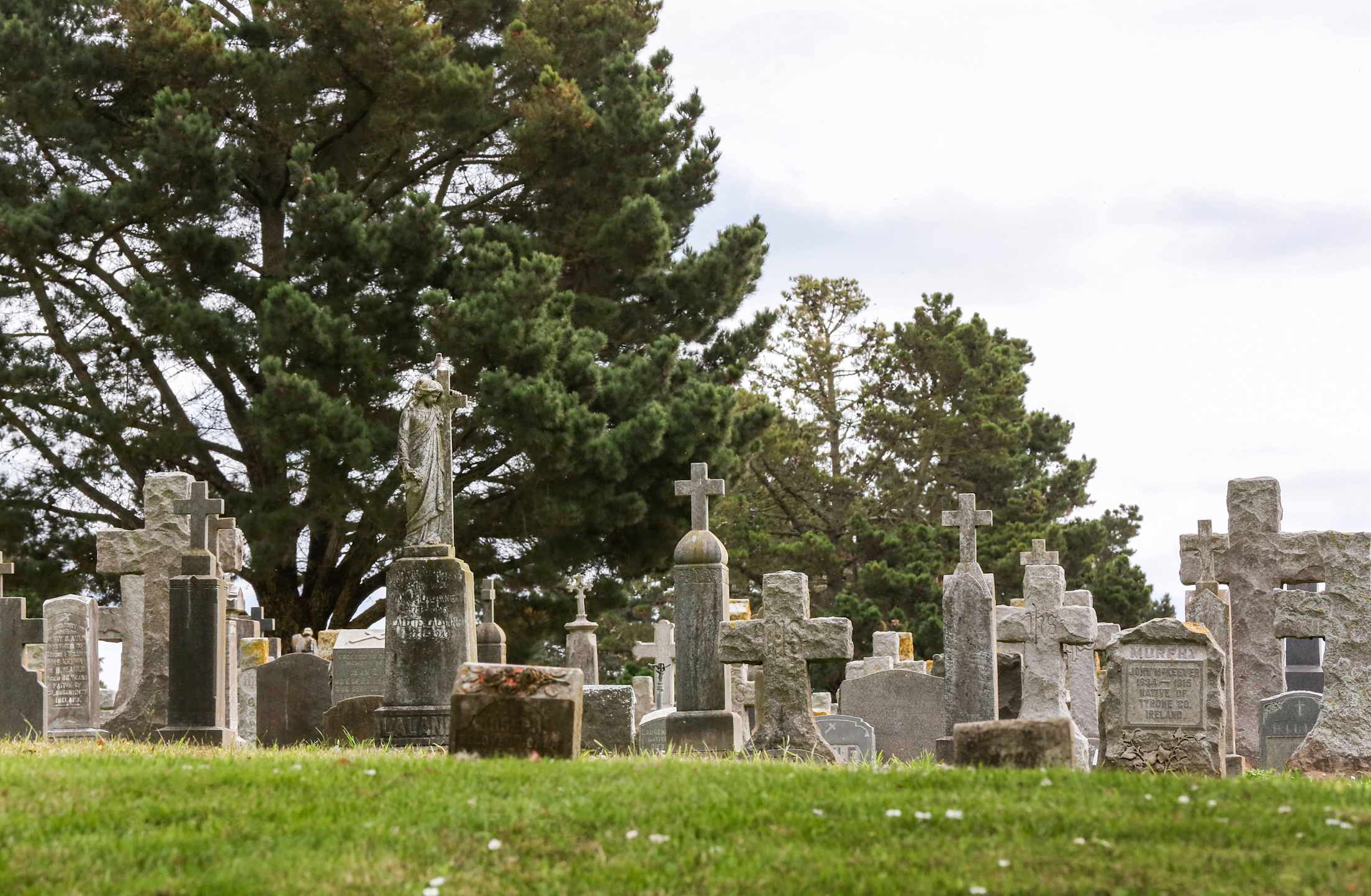
Colma, California
Known as the “City of Souls,” Colma is home to 1,700 living residents and 1.5 million dead. About 75 percent of the town’s 2.2 square miles is occupied by 17 burial grounds. That can all be traced to the history of boomtown San Francisco. In 1901, the city banned burials inside its limits due to an outbreak of the bubonic plague and because real estate was needed for the living. Developers got a law passed allowing them to exhume 150,000 bodies and transport them south to Colma, which then became a massive monument to mortality.
Surprisingly, Colma feels more cheery than eerie. The shops are filled with souvenirs proclaiming the official motto: “It’s great to be alive in Colma.” The meadowy Cypress Lawn cemetery is dotted with duck ponds, and its mausoleums and chapels house one of North America’s largest collections of kaleidoscopic stained glass. The Japanese cemetery incorporates elements of rock gardens amid headstones etched with calligraphy. Elsewhere, you can pay your respects at Levi Strauss’ mausoleum, Wyatt Earp’s modest headstone, and Joe DiMaggio’s grave, where fans still leave baseballs.
Forest Lawn Memorial Park, Glendale, California
With its elaborate architecture and population of late Hollywood celebrities, Forest Lawn captures the essence of showbiz Los Angeles. You might forget you’re in a graveyard as you drink in the tree-lined vistas from Inspiration Slope, peruse replicas of world-famous paintings and statuary in the gardens, and peek into fairytale chapels such as Wee Kirk O’ the Heather (where Ronald Reagan and Jane Wyman married).
In lieu of rows of tombstones, plaques nestled into the grass create subtle gray stripes in the undulating lawns, modestly marking the resting spots of stars like Jimmy Stewart and Errol Flynn. In the palatial Great Mausoleum, you’ll find Elizabeth Taylor’s angelic sepulchre, Clark Gable’s crypt, and a breathtaking stained glass window re-creating Leonardo da Vinci’s “The Last Supper.” But it’s not all glitz: Each fall, Dia de los Muertos celebrations feature floral altars, folkloric dancing, and mariachi music.
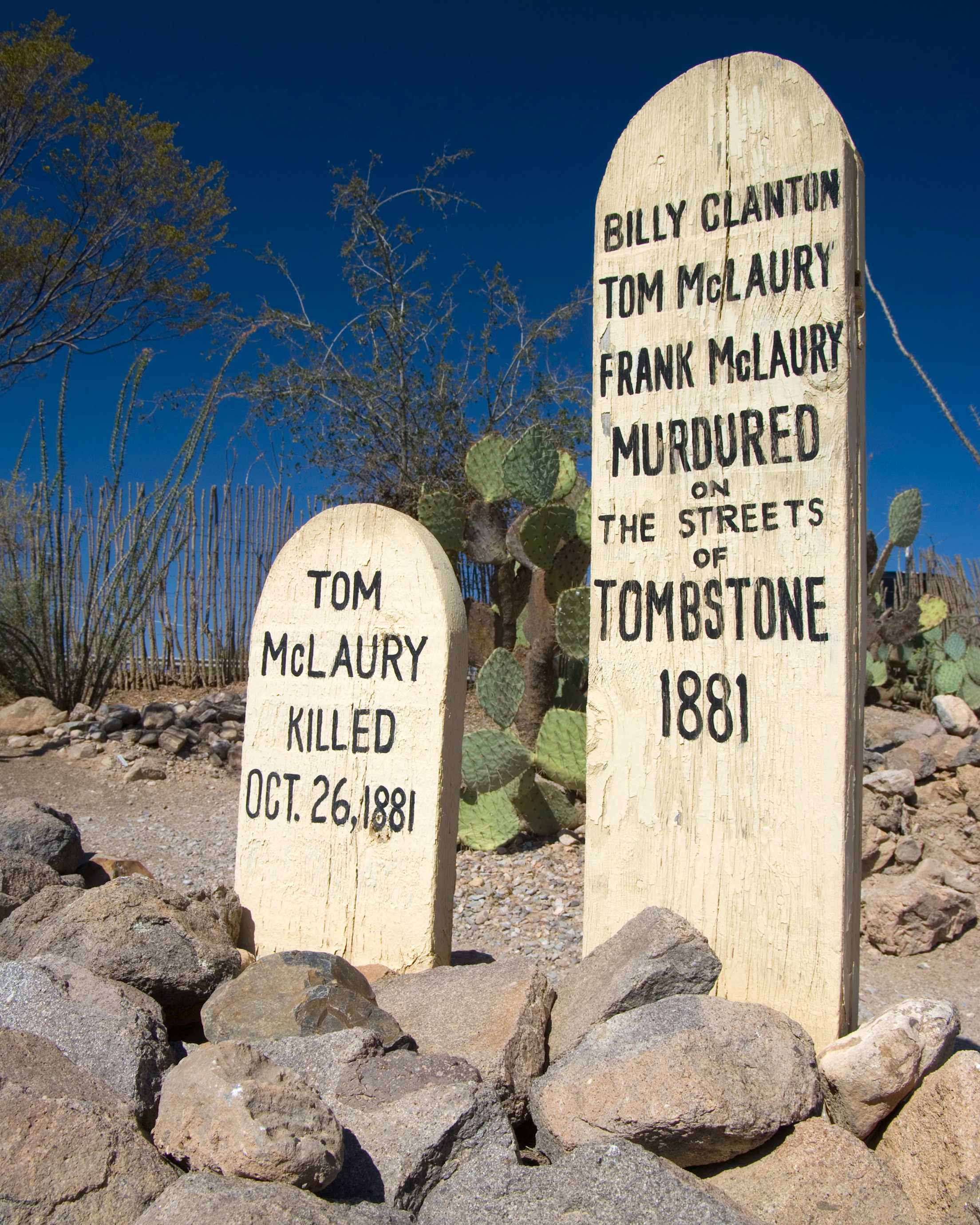
Boothill Graveyard, Tombstone, Arizona
Rocky, bone-dry Boothill is a microcosm of Tombstone. It’s filled with colorful characters such as China Mary (who allegedly ran the opium dens in town), Dutch Annie (“Queen of the Red Light District”), and gunslingers who died with their boots on (hence the name Boothill). Like Tombstone itself, the cemetery feels slightly unreal. One grave marker reads: “Here lies Lester Moore | Four slugs from a 44 | No Les. No More.”
But Boothill is in fact a real graveyard. Established in 1878, it quickly filled up, then fell into disrepair after a new cemetery was constructed. In 1929, residents resurrected Boothill for Tombstone’s 50th anniversary. By then, it was difficult to pinpoint where the original graves were and who was in them. So people guessed. Potential inaccuracies aside, it’s interesting to pay respects to Billy Clanton and Frank and Tom McLaury (losers in the gunfight at the O.K. Corral). Nighttime tours are held on select Fridays and Saturdays.
Glenwood Cemetery, Park City, Utah
Meandering through this grove of golden aspens and graves beside a whispering brook feels like forest bathing with a dash of memento mori. The sylvan site offers a window into those who shaped the history of Utah. It was established in 1885 as a burial ground for members of fraternal organizations such as the Loyal Order of Moose and the Knights of Pythias. Miners joined these societies for camaraderie as well as for health and life insurance, which the mining companies didn’t provide. You’ll see the organizations’ names and symbols, including animals, trees, and shields carved into the headstones.
You can learn about the history of those buried here on several guided tours between June and September. During one annual tour (typically in September), reenactors wearing period clothing tell the tales of their characters’ lives and deaths.
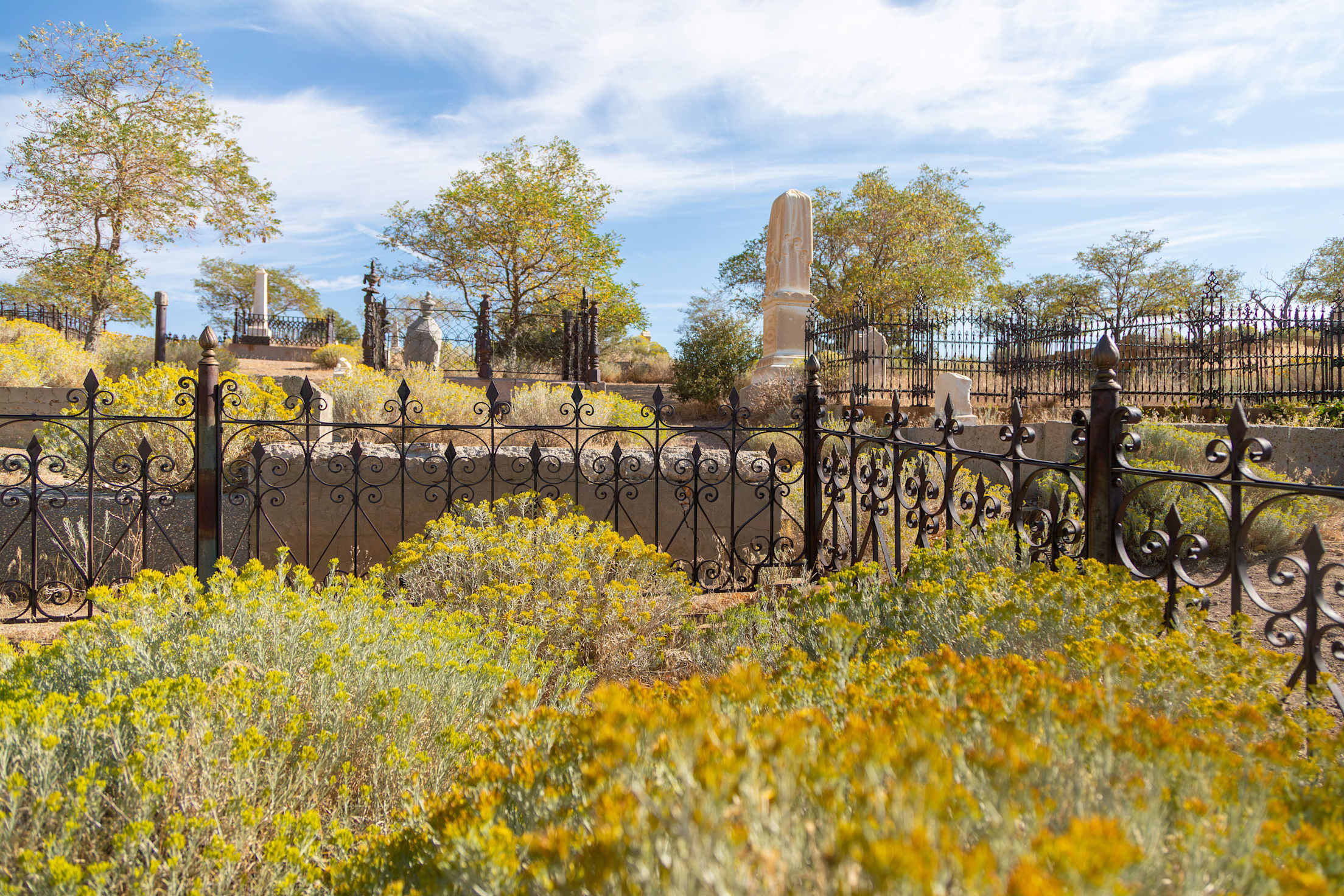
Silver Terrace Cemetery, Virginia City, Nevada
This dusty graveyard encapsulates the motley and hazardous nature of Nevada’s boomtowns. It was established in the 1860s after the Comstock Lode ore deposit was discovered, and the area became the richest silver mining district on the planet. But Virginia City was also dangerous because of explosions, toxic air, disease, fires, and gunfights. Some risk-takers died wealthy. Others perished penniless.
Hence, you’ll notice a juxtaposition of faded wooden grave markers and elaborate marble tombs bordered by Victorian-era wrought iron fences. Reading the epitaphs, you’ll learn that one man was murdered, many died young, and not a few were Irish immigrants fleeing the hardships of the potato famine. One grave is inscribed with a touching tribute to Mary Jane Simpson, a beloved mule who worked the mines before succumbing to a fire. To learn more, watch actors play the roles of the deceased on a Voices from the Past tour in October.
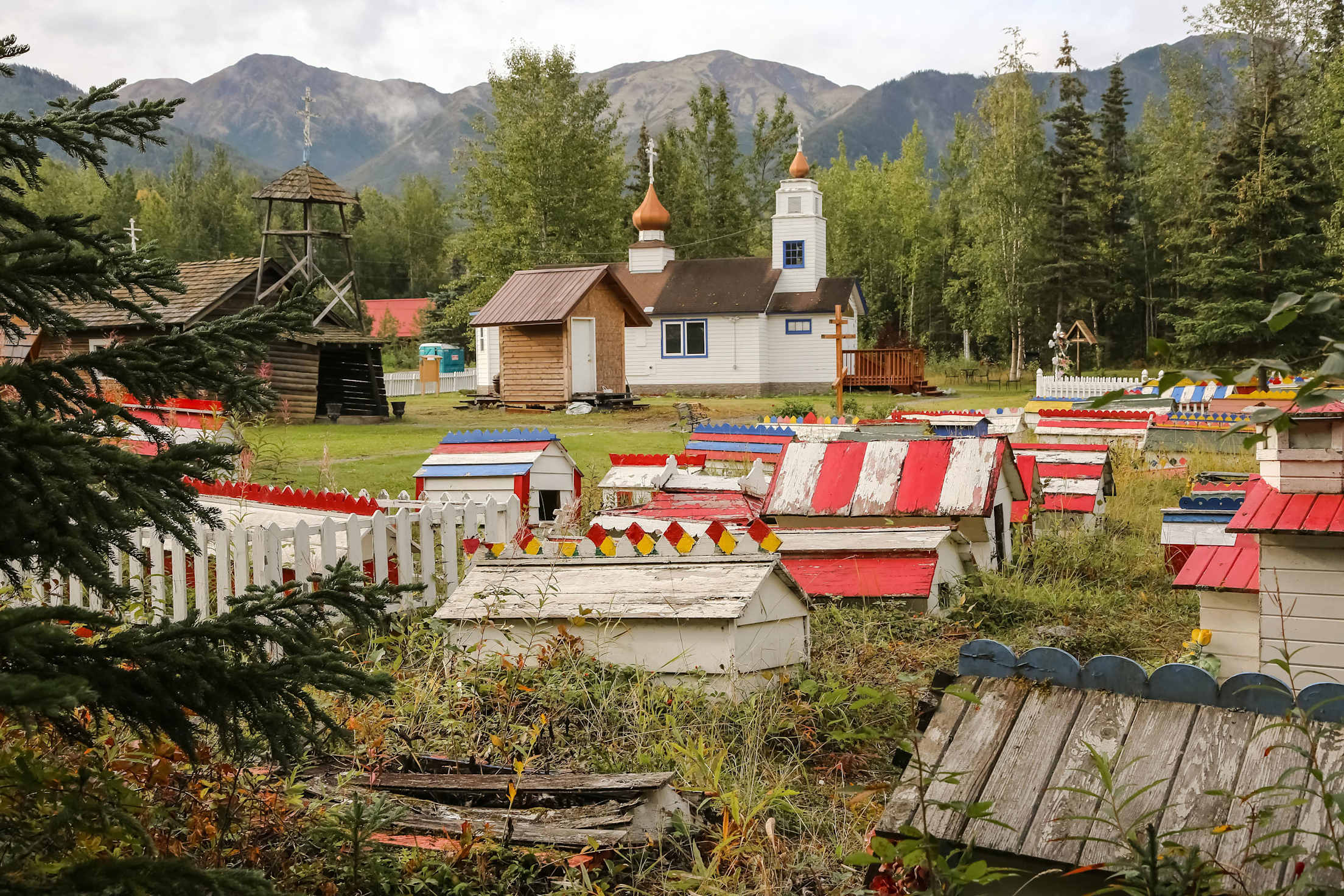
Eklutna Cemetery, Alaska
Eklutna is home to an enchanting cemetery brightened by more than 100 colorful miniature houses, which tell a fascinating story. For over 1,000 years, Southcentral Alaska has been home to the Dena’ina people. They traditionally cremated their dead and placed the ashes in a tree or by a river. From there, they believed that the person’s spirit journeyed to “the High Country.” In the 1800s, Russian Orthodox missionaries converted many Dena’ina to Christianity, which forbade cremation. So the Dena’ina created a compromise: “spirit houses.”
These wooden homes—painted cobalt blue, canary yellow, and emerald green—create a striking sight, backdropped by onion-domed St. Nicholas Church, evergreens, and snow-capped peaks. In the Dena’ina’s view, spirits rising from the graves below can shelter in these houses filled with their treasured belongings before making their final journey. On many houses, the wood is weathered and the paint chipped. That’s because the Dena’ina believe everything taken from the Earth must be allowed to disintegrate and return to it.
Explore Alaska’s cultural heritage with a tour from AAA Travel.